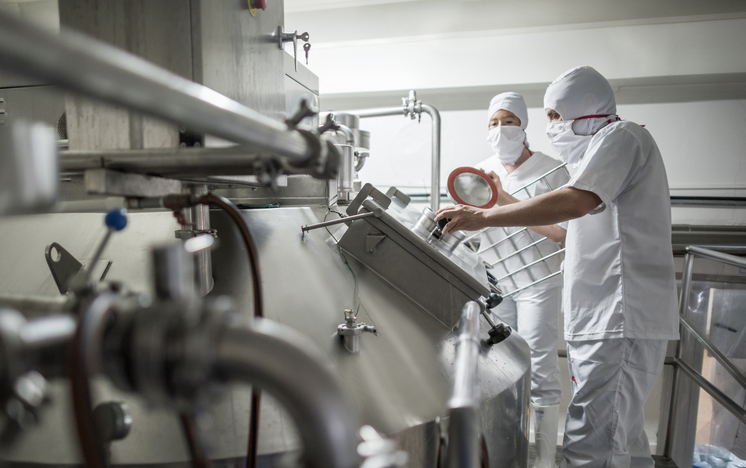- Home
- Science
- Our Work
- Air Pollution
- Agriculture, Farming and Pesticides
- Asthma and other Lung Diseases
- Coronavirus Pandemic (COVID-19)
- Exposure to Chemicals and Dust
- Exposure to Nanomaterials
- Human Exposure
- Neurodegenerative Diseases
- Musculoskeletal Disorders
- Occupational Cancer
- Sustainable Working
- Sustainability and Climate Change
- Stress, Wellbeing and Psychosocial Issues
- COVID-19 IOM Study of Face Coverings in Retail Environments
- Styrene Study
- PROTECT COVID-19 National Core Study
- Firefighters and Cancer – IOM Report
- MORtality Study of Former Professional Footballers in England and Wales (MORSE) Study
- Our Scientists
- Our Expertise
- Nano Material Services
- Development and Management of Data and Information Systems and Services
- Ergonomics Design and Evaluation
- Epidemiological Studies & Methods
- Exposure Assessment
- Health Impact Assessment (HIA) and Risk Assessment
- Policy Evaluations
- Study Design and Statistical Analysis
- Systematic Reviews and Meta-analyses
- Toxicology
- Workplace Cluster of Disease
- IOMLIFET
- IOM Scientists Advocate Tighter Standards for Airborne Dust at Work
- Research Project on Work Related Musculoskeletal Disorders
- Styrene Study
- Firefighters and Cancer – IOM Report
- IOM Library
- Contact our Research Experts
- Our Work
- Occupational Hygiene
- Case Studies
- Air Quality Sensors
- COSHH Assessment
- Dust Exposure
- Environmental Management
- Face Fit Testing
- Hand-Arm Vibration
- Indoor Air Monitoring
- Laboratory Animal Allergens
- Legionella Risk Assessment
- Local Exhaust Ventilation
- Noise Monitoring
- Thermal Exposure Monitoring
- Workplace Exposure Limits (WELs)
- Welding Fumes
- Remote Monitoring Services
- Formaldehyde Exposure Monitoring
- Biological Agent Exposure Monitoring in Waste Management
- Chromium VI
- Occupational Hygiene – Quick Quote
- Lab Services
- Asbestos and other Fibres
- Asbestos Sample Testing
- Asbestos Proficiency Testing
- Dust and Crystalline Silica
- Lead in Paint
- Metals, acid anions, acid gases
- Microbiology
- Pharmaceuticals
- Solvents & Other Organic Chemicals
- Hazard Assessment and Toxicology
- Dustiness Testing of Bulk Powders
- Lab Services Quick Quote
- Training
- Courses
- Face Fit Tester Training – Combined 2-day Course
- Face Fit Tester Training – Day 1 Qualitative Test Method
- Face Fit Tester Training – Day 2 Quantitative Test Method
- One Day Ventilation Maintenance Course
- BOHS Five Day Authorised Person (Ventilation) Course
- BOHS Three Day Competent Person (Ventilation) Course
- BOHS Two Day Competent Person (Ventilation) Refresher Course
- Contact our Training Team
- Courses
- Hospital Ventilation
- Authorising Engineer
- Dentistry Post Lockdown
- Design Review
- Independent Review
- Diathermic pen and Electro surgical tool testing
- Microbiological Monitoring
- Systems Refurbishment and Upgrade
- Validation and Verification Testing
- HSE COVID-19 Spot Check Inspections
- Training
- Contact Our Hospital Ventilation Experts
- Consultancy
- Our Company
- Contact Us

Sick Building Syndrome Testing
What is Sick Building Syndrome?
Sick Building Syndrome is a condition affecting office workers, symptoms include headaches and respiratory problems. Symptoms are attributed to unhealthy or even stressful factors within the working environment.
Sick Building Syndrome (SBS) is an imprecise term used to describe those buildings in which there is a prevalence of a range of symptoms causing discomfort and a sense of being unwell rather than a distinct illness.
Are your employees complaining are experiencing a range of symptom which includes:
- eye, nose and throat irritation,
- the sensation of dry mucous membranes and skin,
- hoarseness, wheezing, coughs and frequent respiratory infections,
- skin rash and itching,
- headaches and mental fatigue,
- nausea and dizziness.
What causes Sick Building Syndrome?
No single cause has been identified for SBS, although many contributory factors have been suggested, and a large number of causes are inter-related. SBS may result from the simultaneous combination of a number of factors.
- physical aspects, such as inadequate ventilation,
- thermal discomfort,
- low humidity,
- lighting,
- air pollution including airborne organic matter,
- other factors, such as low morale and general dissatisfaction with working conditions, may also play a part.
How IOM can help:
SBS can be treated by alleviating the symptoms and reducing exposure to the causes. IOM can provide a complete indoor air quality assessment which looks at carbon dioxide levels, moisture, mold and dust levels. With over fifty years of experience of working within all sectors, we can provide clear, concise and factual survey data of your workplace environment using our indoor air quality monitoring methods.
We recommend the following steps and can assist with following the recommendations in ISO7730 and CIBSE guidelines, are the first steps which should be undertaken by occupiers in an investigation of a possible case of SBS.
- carry out a workplace employee survey to determine if the prevalence of symptoms is higher than expected or are the symptoms caused by a common virus etc. The survey can also identify other obvious causes which can easily be remedied such as changing the workplace temperature;
- check general building cleanliness, including checking that vacuum cleaners are effective, regularly emptied, and that filters are clean;
- check proprietary cleaning materials are being correctly used;
- check the general operation of heating, ventilation and air-conditioning systems, including the correct setting of dampers, particularly in the fresh air supply system;
- check condition and cleanliness of air filters, humidifiers, de-humidifiers and cooling towers; and
- check heating, ventilation and air-conditioning system maintenance schedules and compliance with these schedules.
For more advice, or to speak to an Occupational Hygienist complete the quick quote form below.

